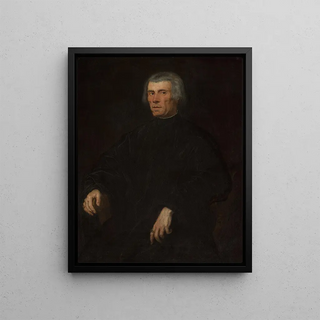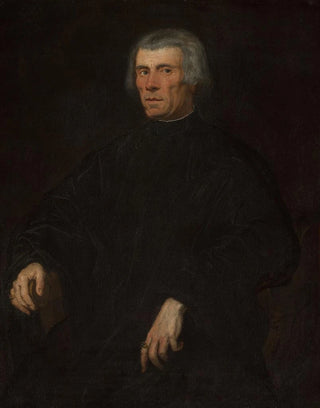Art print | Portrait of a man (conflict of cases) - Jacopo Tintoretto


View from behind

Frame (optional)
Art print Portrait of a Man (case conflict) - Jacopo Tintoretto – Captivating Introduction
The "Portrait of a Man (case conflict)" by Jacopo Tintoretto is a work that transcends the simple frame of a portrait to immerse the viewer in a universe rich in emotions and intrigues. Created in the 16th century, this painting embodies not only the technical skill of its creator but also a pivotal moment in art history. Through this painting, Tintoretto invites us to explore the complexity of the human condition and the nuances of character, while engaging us in a silent dialogue between the subject and the viewer. The intense gaze of the portrayed man seems to capture a profound essence, making this work a true mirror of the soul.
Style and uniqueness of the work
What sets the "Portrait of a Man (case conflict)" apart is undoubtedly Tintoretto's bold style. The artist, known for his dynamic compositions and play of light, manages to create an atmosphere that is both intimate and dramatic. The treatment of shadows and highlights gives a striking depth to the image, while the meticulous details of the face reveal an exceptional mastery of texture rendering. The colors, though dark, are enhanced by touches of light that emphasize the features of the character, thus accentuating his expression. This portrait does not merely depict a man; it evokes a story, an inner struggle, a case conflict that resonates with the universal human experience. Tintoretto, through his innovative approach, succeeds in bringing his subject to life, making this work a masterpiece of Renaissance portraiture.
The artist and his influence
Jacopo Tintoretto, one of the great masters of Venetian painting, knew how to mark his era with his unique style and artistic vision. Trained in the shadow of giants such as Titian, he quickly developed a signature that is his own, combining great expressiveness with bold compositions. Tintoretto not only influenced his contemporaries but his legacy endures through the centuries, inspiring many artists to adopt his techniques. His penchant for movement and emotion paved the way for new explorations

Matte finish

View from behind

Frame (optional)
Art print Portrait of a Man (case conflict) - Jacopo Tintoretto – Captivating Introduction
The "Portrait of a Man (case conflict)" by Jacopo Tintoretto is a work that transcends the simple frame of a portrait to immerse the viewer in a universe rich in emotions and intrigues. Created in the 16th century, this painting embodies not only the technical skill of its creator but also a pivotal moment in art history. Through this painting, Tintoretto invites us to explore the complexity of the human condition and the nuances of character, while engaging us in a silent dialogue between the subject and the viewer. The intense gaze of the portrayed man seems to capture a profound essence, making this work a true mirror of the soul.
Style and uniqueness of the work
What sets the "Portrait of a Man (case conflict)" apart is undoubtedly Tintoretto's bold style. The artist, known for his dynamic compositions and play of light, manages to create an atmosphere that is both intimate and dramatic. The treatment of shadows and highlights gives a striking depth to the image, while the meticulous details of the face reveal an exceptional mastery of texture rendering. The colors, though dark, are enhanced by touches of light that emphasize the features of the character, thus accentuating his expression. This portrait does not merely depict a man; it evokes a story, an inner struggle, a case conflict that resonates with the universal human experience. Tintoretto, through his innovative approach, succeeds in bringing his subject to life, making this work a masterpiece of Renaissance portraiture.
The artist and his influence
Jacopo Tintoretto, one of the great masters of Venetian painting, knew how to mark his era with his unique style and artistic vision. Trained in the shadow of giants such as Titian, he quickly developed a signature that is his own, combining great expressiveness with bold compositions. Tintoretto not only influenced his contemporaries but his legacy endures through the centuries, inspiring many artists to adopt his techniques. His penchant for movement and emotion paved the way for new explorations






